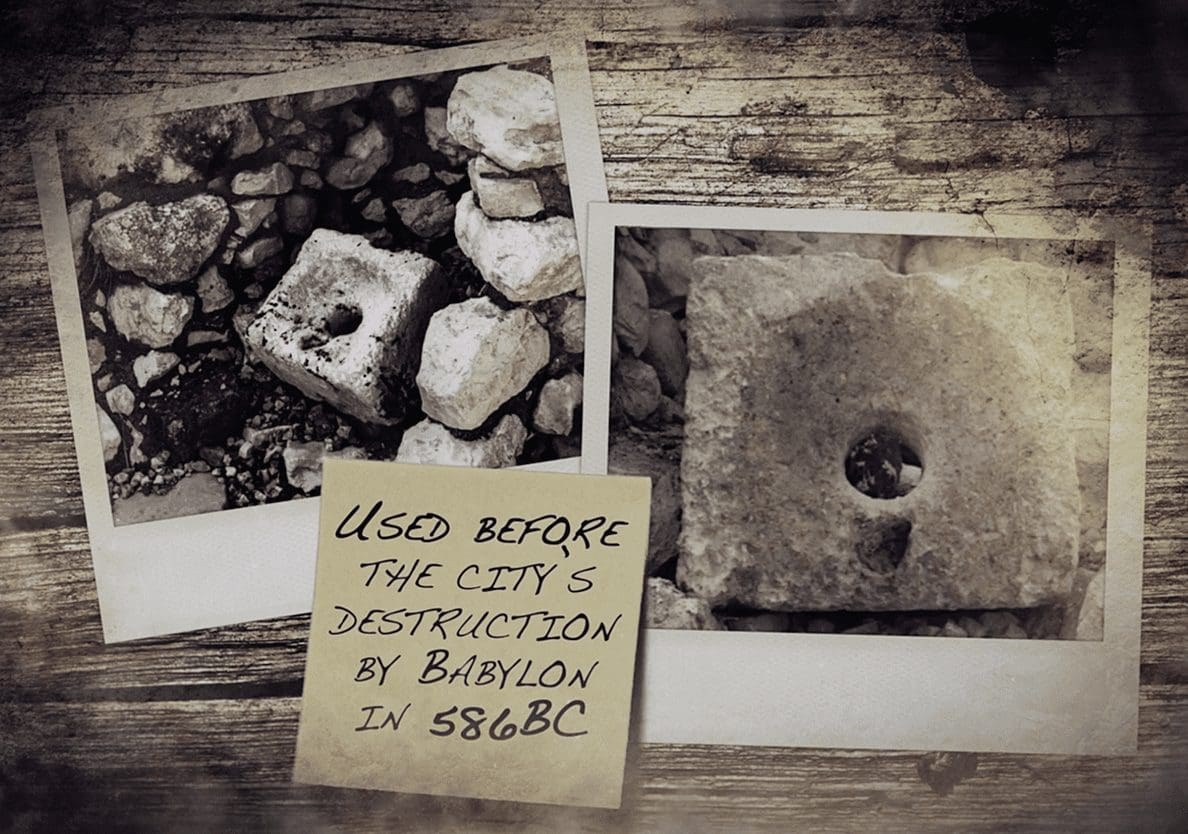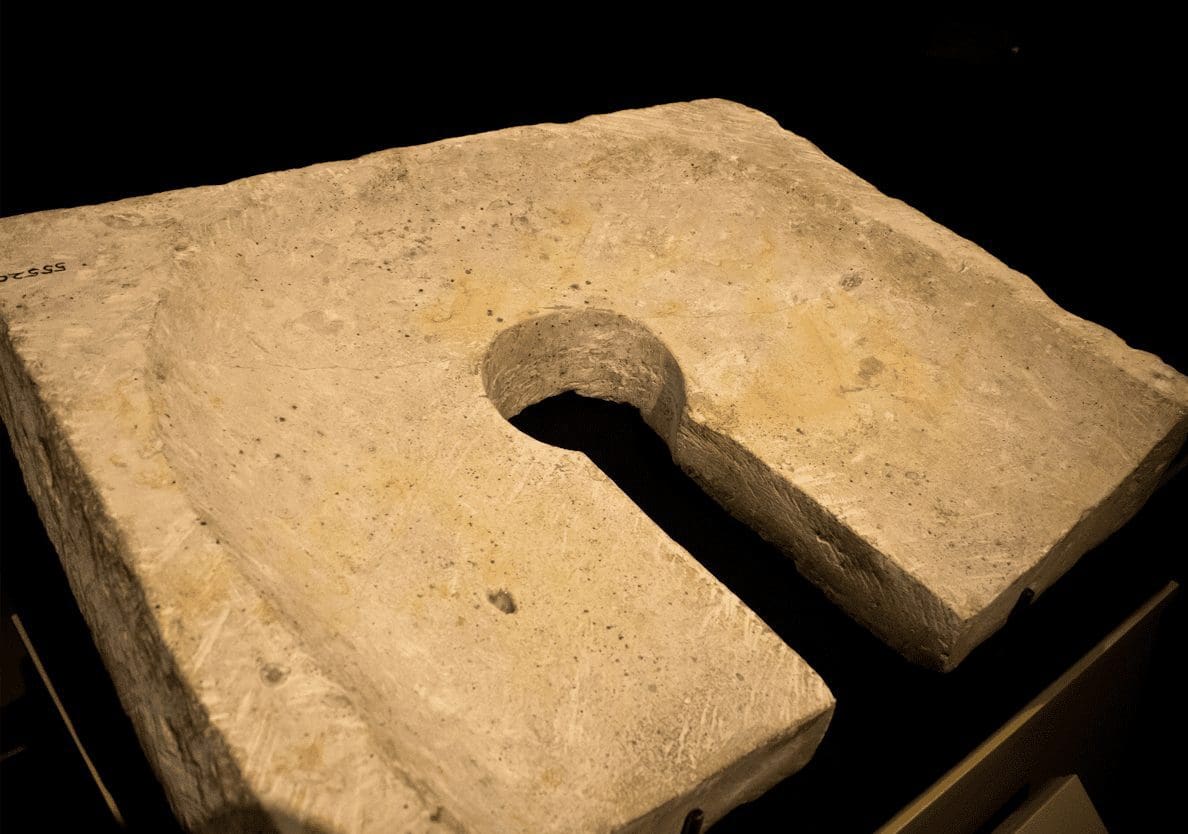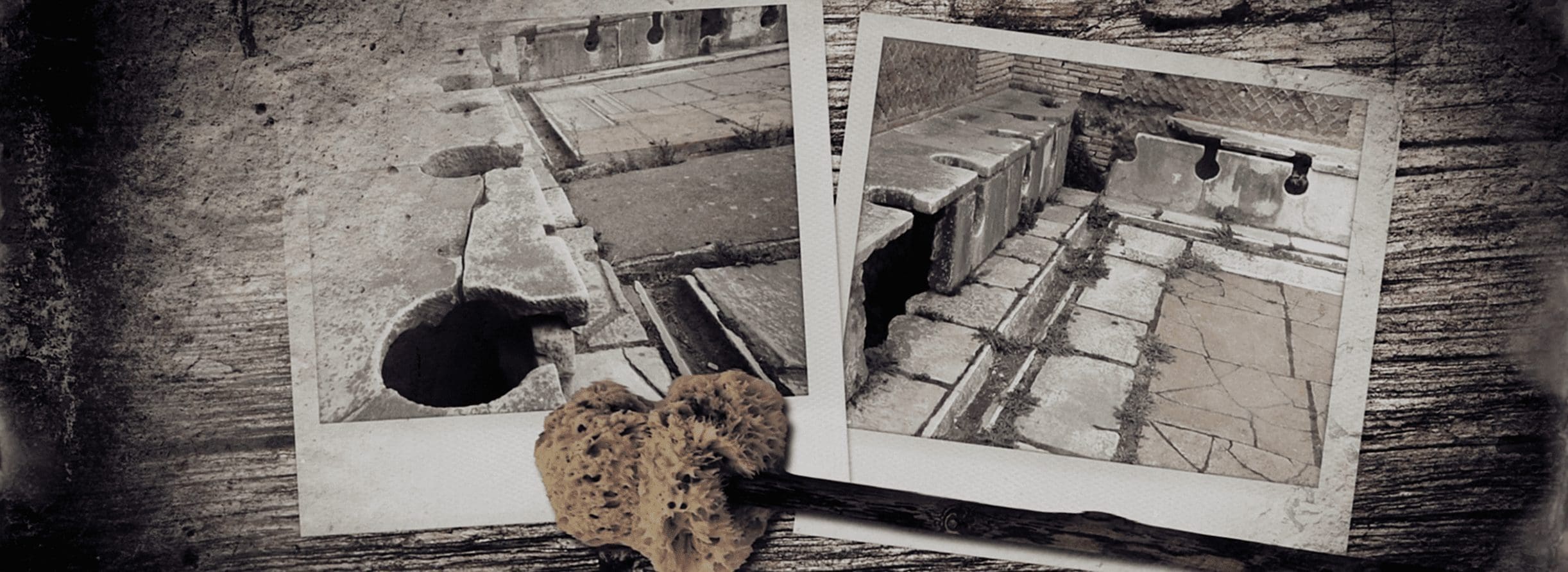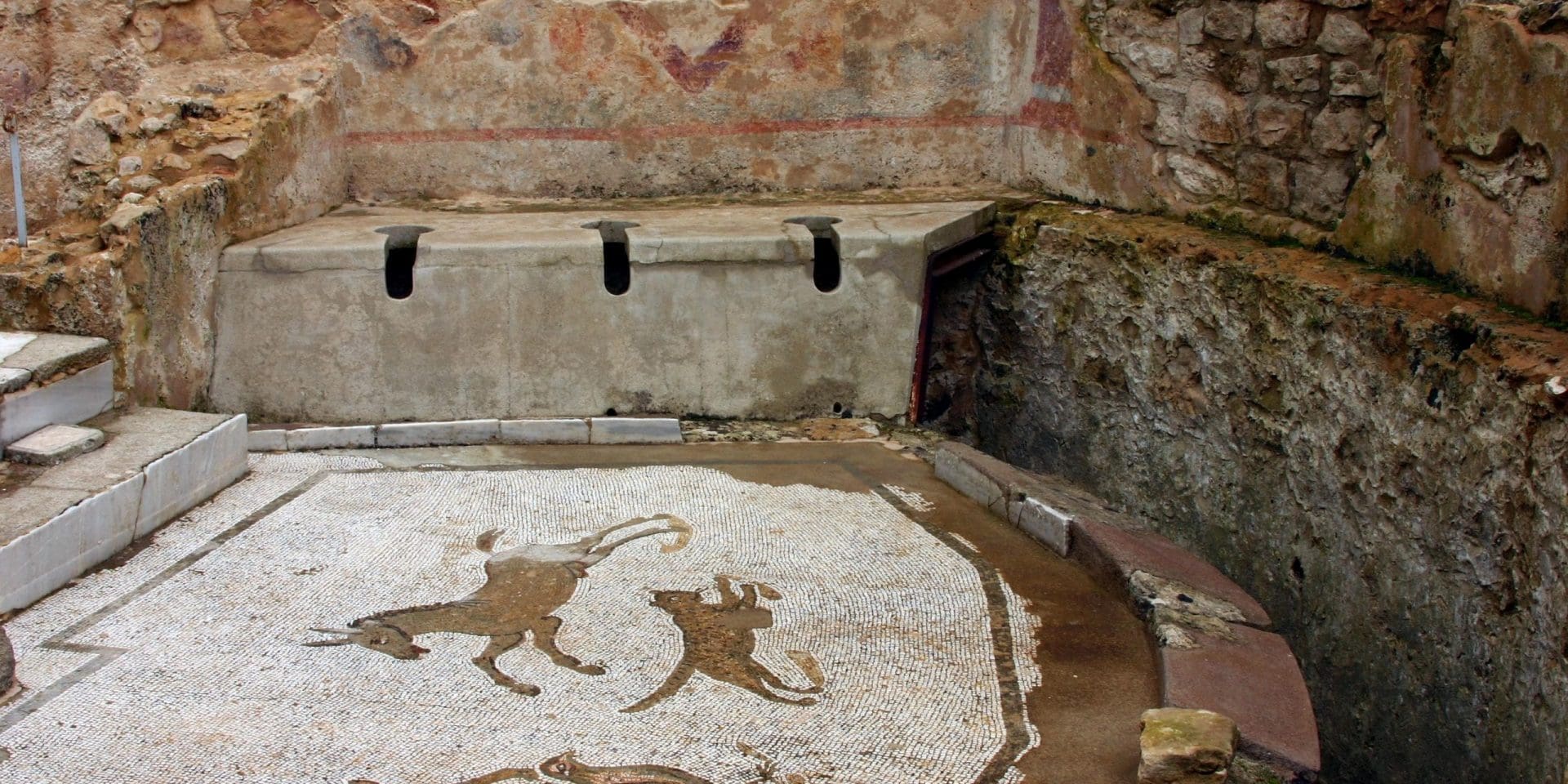A common human issue has always been what to do with every day human waste. The simplest answer for those living nomadic lifestyles would likely be a mixture of what humans without modern technology have always done: the digging of holes or the use of chamber pots to collect waste that could be emptied later.
“As evidence by samples from these cesspits, liming agents were routinely added to the pits to control bacterial production and aid in the decomposition of waste.”
Evidence shows that humans who lived stationary lives, whether in cities and houses or outside of cities in country villas, had more than just the humble hole or chamber pot. They could upgrade their hole by creating cesspit toilets. These were very much like outhouses, a pit was dug, often was lined with plaster to help contain the waste, and then a toilet seat was placed over the hole.
Several stone toilet seats have been found around Israel, and famously two were found still over their cesspits in Jerusalem during the City of David excavations. These toilets were used for some time before the city’s destruction by Babylon in 586BC. As evidence by samples from these cesspits, liming agents were routinely added to the pits to control bacterial production and aid in the decomposition of waste. And every so often waste would need to be removed from the pits.


Even from very ancient times however, more luxurious arrangements are known to have existed: toilets with running sewer systems. Running water toilets were seats built over top of water pipes that had continuously flowing water that would wash away waste. Eliminating the inconvenience and probably much of the smell of cesspit toilets. Toilets like this are known from Mesopotamia as far back as the 3rd Millennium BC!

Public toilet seats of the Roman Empire
Nevertheless. it was not until the time of the Roman Empire that these toilets were made available to the public rather than just the elite. Sometime in the 2nd Century BC, Roman public toilets began to be installed widely throughout the Empire. They were built in public spaces to serve many at a time, privacy was maintained more through the floor-length togas worn by men and women and less through proximity. The seats were made of stone or wood and were placed over a channel of flowing sewer water that would wash away the excrement.
A bit later in time, between the first and second century AD, a trench or channel of ever flowing water was built into the floors of these Roman latrines directly in front of the lines of toilet seats. These plus sponges attached to short sticks are believed to have been the Roman answer to toilet paper. The sponges would be rinsed off in the channel and set aside to be used for the next bathroom patron.

Corie Bobechko is a daily co-host, speaker, and writer of Bible Discovery. She also hosts a YouTube channel that shows how history and archaeology prove the Bible. Her heart for seekers and skeptics has led her to seek truth and share it with others. Corie also has a Bachelor of Theology from Canada Christian College.
• Shanks, Hershel. “The Puzzling Channels in Ancient Latrines,” Biblical Archaeology Review 28.5 (2002): 49–51, 70.
https://members.bib-arch.org/biblical-archaeology-review/28/5/4
• Koloski-Ostrow, Ann Olga. “Roman Latrines,” Archaeology Odyssey 7.3 (2004): 48–53, 55.
https://members.bib-arch.org/archaeology-odyssey/7/3/9
• Ganor, Saar, and Igor Kreimerman. “Going to the Bathroom at Lachish,” Biblical Archaeology Review 43.6 (2017): 56–60.
https://members.bib-arch.org/biblical-archaeology-review/43/6/5
• “Strata: Then and Now: Luxurious Lavatories,” Biblical Archaeology Review 43.1 (2017): 17.
https://members.bib-arch.org/biblical-archaeology-review/43/1/22
• Cahill, Jane M., et al. “It Had to Happen,” Biblical Archaeology Review 17.3 (1991): 64–69.
https://members.bib-arch.org/biblical-archaeology-review/17/3/5






